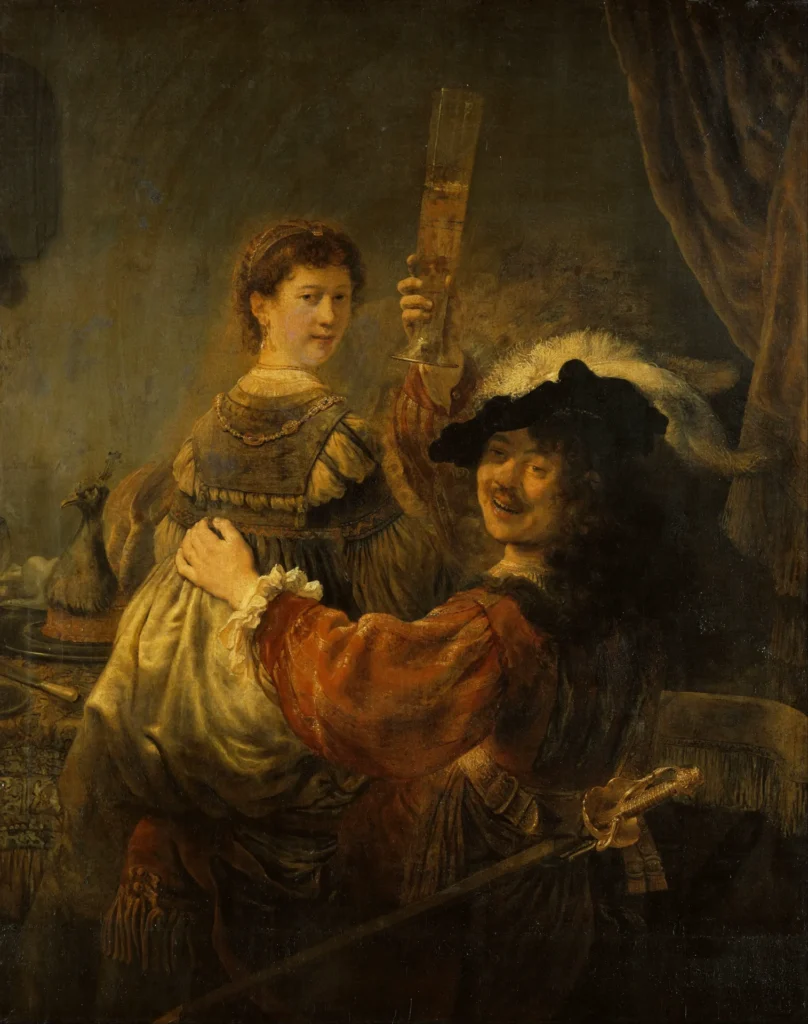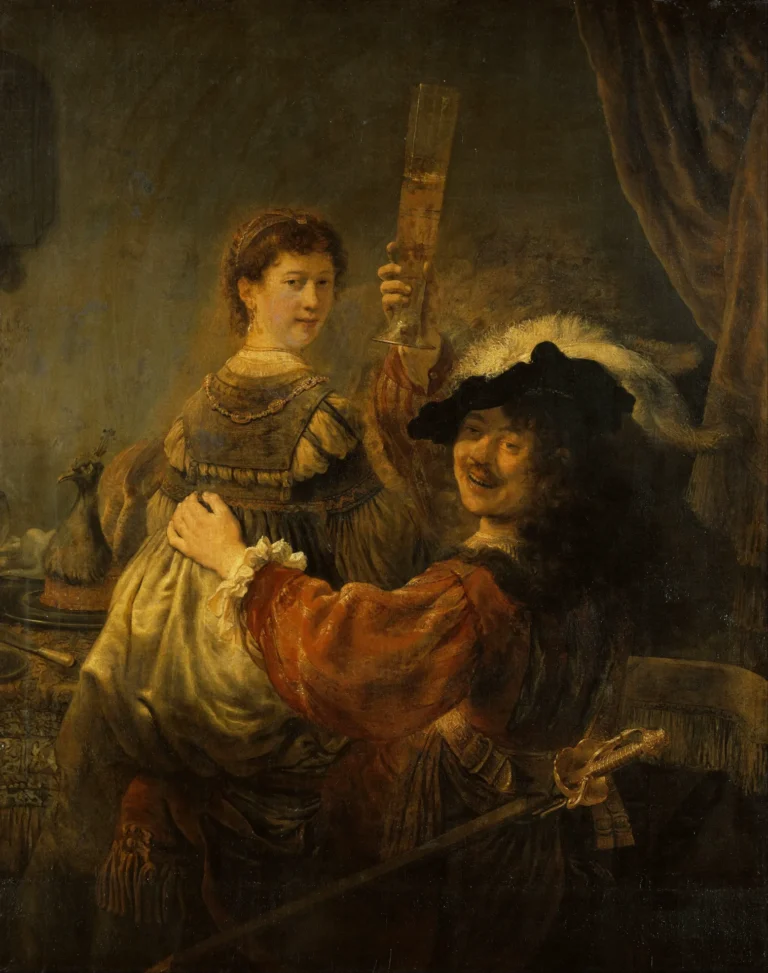The Prodigal Son in the Brothel
The Prodigal Son in the Brothel is a remarkable artwork by Rembrandt van Rijn, painted around 1635. This striking piece captures a moment from the parable of the Prodigal Son, uniquely focusing on the son's indulgent lifestyle in a brothel rather than his eventual return home. It features Rembrandt and his wife Saskia, contributing an autobiographical quality. The work showcases an impressive mastery of oil painting, using vibrant Baroque pigments and intricate layering techniques, positioning it as a noteworthy exploration of themes such as sin, redemption, and human experience.
around 1635
About the Artwork
In this powerful depiction of the Prodigal Son, Rembrandt diverges from the traditional narrative that emphasizes repentance and return. Instead, he illustrates the moment of debauchery, a decision that expresses both artistic risk and deep personal connection. This self-portrait element interweaves Rembrandt's own life struggles, experiences with loss, and yearning for redemption. The choice of setting—a brothel—provides a stark contrast to the themes of forgiveness and grace later represented in his work, The Return of the Prodigal Son, painted in 1669. This juxtaposition fuels an intense conversation about the human condition and the complexities of choice. Rembrandt's application of light and shadow further enhances the emotional depth, cultivating an atmosphere that draws viewers into the heart of the narrative.










